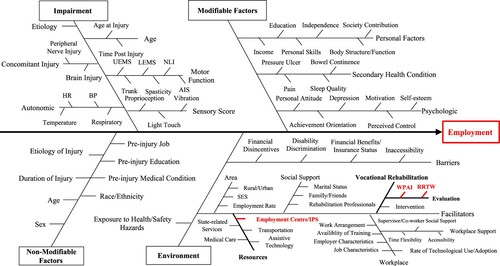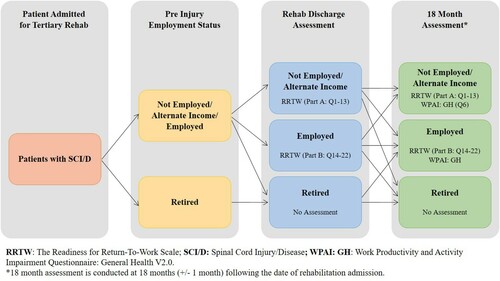Figures & data
Table 1 Vocational rehabilitation activities adapted from Ottomanelli et al.Citation59.
Table 2 Outcomes measures considered for inclusion in the employment indicators.
Table 3 Selected structure, process and outcome indicators for the employment domain.


